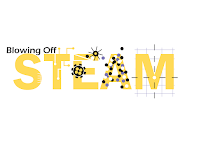You are invited to attend “Dakota and Ojibwe Skies” to learn how our American Indian ancestors used the moon, earthen architecture, and a turtle’s shell to predict astronomical events with remarkable precision.
The virtual discussion will be led by Dr. Jim Rock, a citizen of the Dakota Nation, is a faculty member in the Department of Physics and Astronomy and Director of Indigenous Programming for the Marshall W. Alworth Planetarium at the University of Minnesota Duluth. In 2014 he co-authored the book Makoċe Wiċaŋḣpi Wowapi | D(L)akota Star Map Constellation Guide and has co-published several journal articles on Dakota sacred mound and cave sites.
He will discuss both topics from his published works in addition to local connections with the Newark Earthworks and the Serpent Mound in Peebles, Ohio.
- Marshall W. Alworth Planetarium at the University of Minnesota Duluth
- Native Skywatchers | Indigenous Astronomy Revitalization
- Makoċe Wiċaŋḣpi Wowapi | D(L)akota Star Map Constellation Guide
- Makoce Wicanhpi Wowapi | D(L)akota Star Map
- Wakáŋ Tipi Center
- Lower Phalen Creek Project
- We Come from the Stars Video
- Minnesota Humanities Center Vimeo
- Bdote Memory Map
- Hiawatha First Nation
- Serpent Mounds National Historic Site of Canada
- Otonabee-South Monaghan, Ontario
- Ancient Ohio Trail
- World Heritage Ohio
- Calendar | Living Maya Time Sun, Corn, and the Calendar
- National Museum of the American Indian
- STS-135: The Final Voyage | NASA
- Science Museum of Minnesota
- Stellarium
- Sky Cultures
- Aztec
- Dakota
- Hawaiian
- Inuit
- Lokono
- Navajo
- Northern Andes
- Ojibwe
- Tucano
- Tupi
- "Rattlesnake Effigy Mound Ancestors Still Teaching" (PDF available)
- Open Rivers, University of Minnesota, Fall 2020.
- "Indigenous Riverscapes and Mounds: The Feminine Relationship of Earth, Sky, and Water" (PDF)
- Jim Rock, Hawaii University International Conferences, 2018.
- "Learning from the Dakota: Water and Place" (PDF available)
- Open Rivers, University of Minnesota, Summer 2018.
- "Outer space, tobacco and time are key ingredients for low-gravity garden in NASA experiment that started at Science Museum of Minnesota"
- Twin Cities Pioneer Press, July 18, 2011.


No comments:
Post a Comment